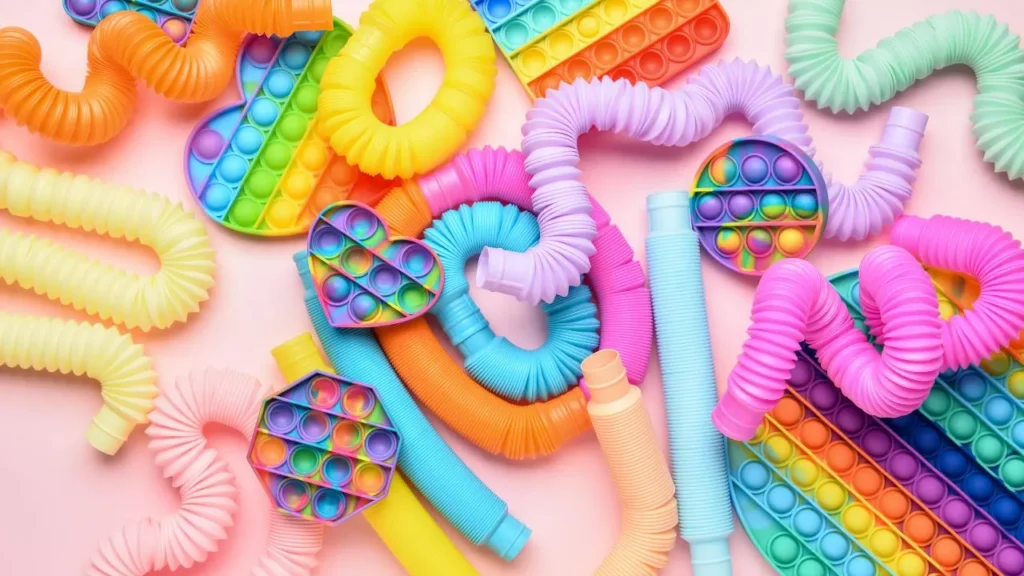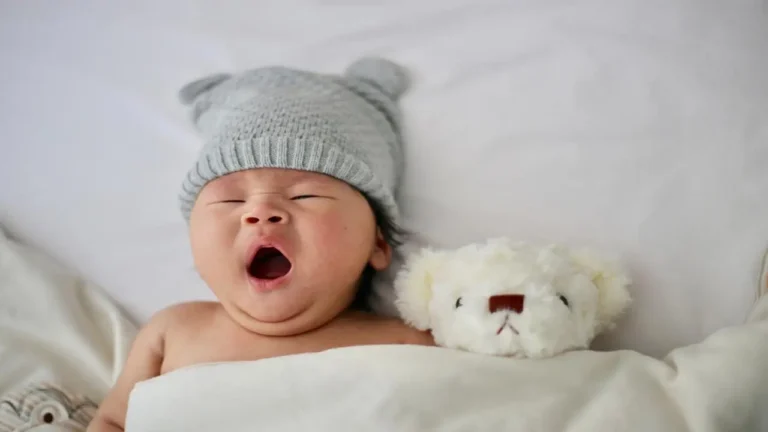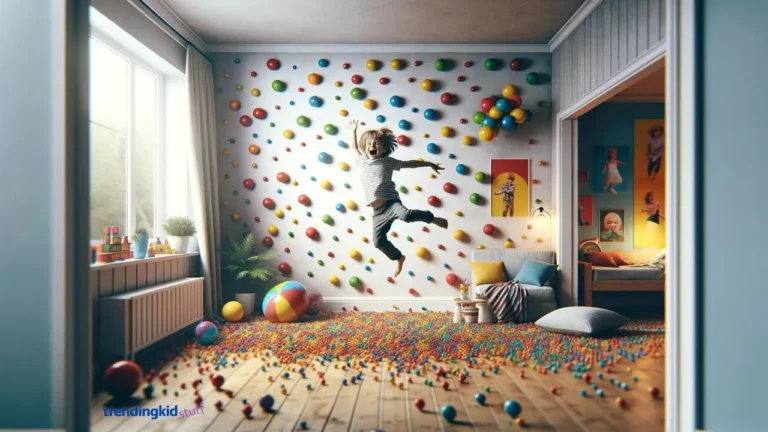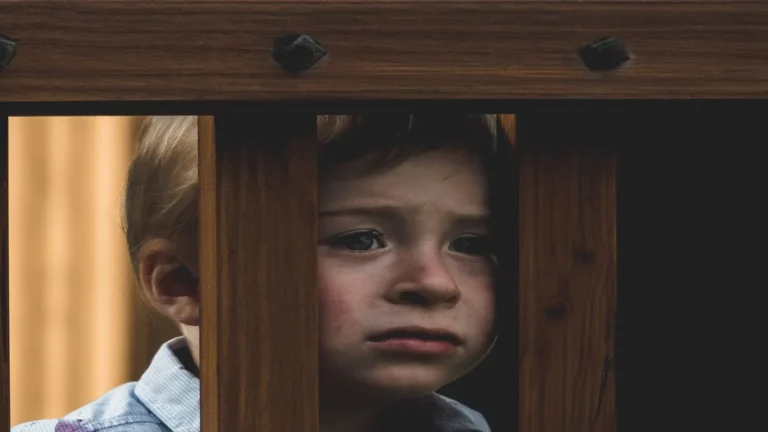Transformative Sensory Toys: What Are They Really?
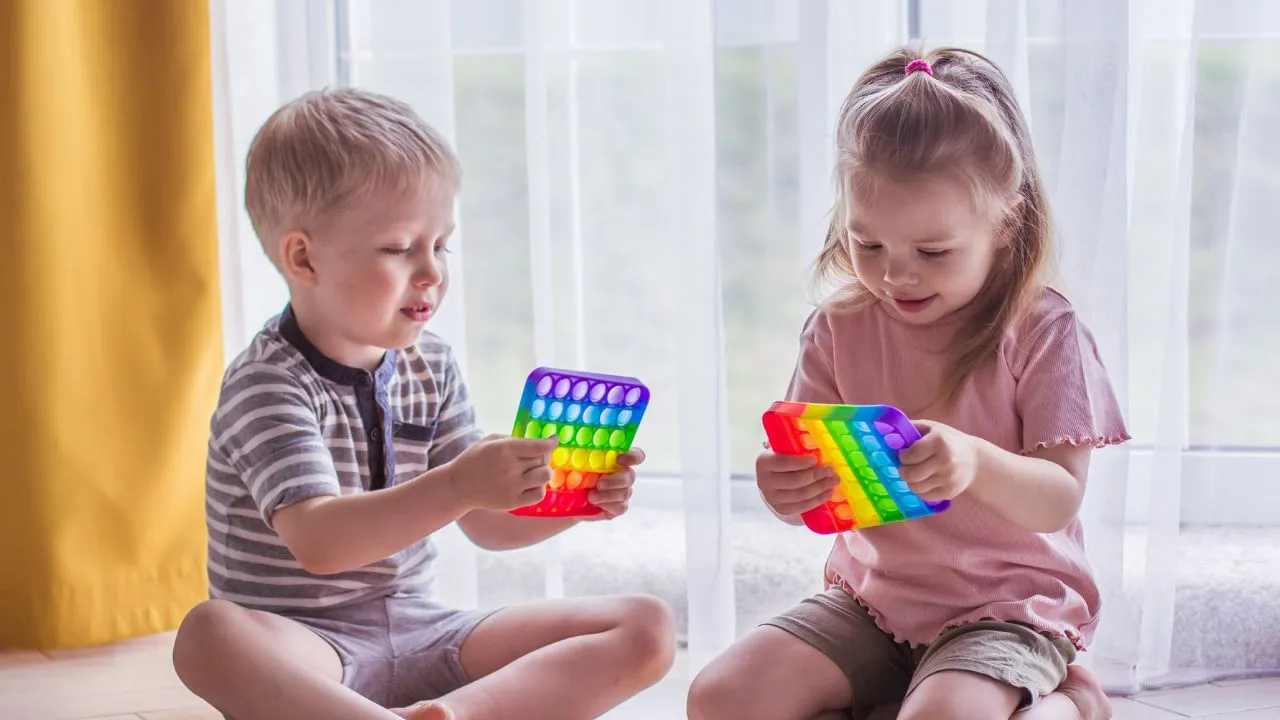
Are you searching for a way to supercharge your child’s cognitive growth? Sensory toys might just be your answer. These toys, which range from swing sets to bins filled with kinetic sand or dry rice, are more than just playthings, they’re powerful tools for development.
Children today are bombarded with various stimuli but often lack the right kind of sensory experiences that promote optimal development. This gap can hinder their cognitive growth and sensory processing abilities.
Imagine your child struggling to focus or becoming easily overwhelmed by their environment. Without the right sensory input, they might miss out on crucial developmental milestones. This lack of proper stimulation can lead to frustration for both the child and the parents, as traditional toys often fail to provide the necessary engagement.
Enter sensory toys. These specially designed toys engage your child’s senses in unique and beneficial ways. From the soothing motion of a swing set to the tactile exploration of kinetic sand, sensory toys provide essential experiences that aid in cognitive and sensory development.
By incorporating these toys into your child’s playtime, you can help them build better focus, coordination, and sensory processing skills.
Parents, it’s time to rethink playtime. Introducing sensory toys into your child’s routine is like adding sprinkles to ice cream, it’s not only delightful but also incredibly beneficial. With sensory toys, you’re not just giving your child something to play with; you’re giving them tools to explore, learn, and grow.
The Eight Sensational Senses
Yes, you heard it right – not five, not six, but eight senses. Let’s take a quick sensory tour:
These senses work as a team, and they need to be sharpened, honed, and ready for action, just like your kitchen knives (but way more fun).
Sensory Toys: Growing, Learning, and Having Fun
We all know practice makes perfect, but who said it couldn’t be enjoyable? Sensory toys are more than toys; they’re like personal trainers for the senses, guiding kids’ growth and cognitive skills development. From sensory stimulation to sensory integration, these toys are no child’s play. They enhance fine motor skills, promote physical well-being, and make learning a joyous journey.
So, what’s the big deal about sensory toys? They’re not just child’s play – they’re the tools that help shape your children’s world. Whether you’re raising neurotypical children or embracing the diversity of the neurodiverse, sensory toys are like the building blocks of a child’s mind.
Ready to explore further? Stay with me as we unravel the world of sensory toys and help your kids benefit from the richness they can bring!
Sensory integration – now, that’s a term that can have you scratching your head, isn’t it? But don’t worry, we’re about to unpack this buzzword, and you’ll soon see why it’s as essential to understanding sensory toys as knowing how to assemble that 1,000-piece puzzle you bought for the kids (and ended up doing yourself).
See Related: Best Fidget Toys
What’s Cooking in the Sensory Kitchen? Sensory Integration Explained
Sensory integration is like the master chef in the kitchen of our brain, taking all the ingredients from our senses and whipping up the perfect dish to help us experience the world. But what if the chef’s having a bad day? That’s when sensory processing challenges come into play.
Imagine the brain receiving too little or too much sensory input, like adding a pinch of salt when you need a spoonful or a whole cup when a dash would do. This misjudgment can manifest in various ways, from restless leg syndrome to severe anxiety, even leading to panic attacks.
Sensory Integration and Neurodiverse Children: A Complex Recipe
But hey, sensory integration is not only a matter of random mishaps. It’s often linked with neurodiverse conditions such as ADHD and autism spectrum disorder (ASD). Did you know that a study found 43% of subjects with ADHD had hyper or hyposensitivity to sensory inputs? It’s like having taste buds that are too keen or too dull.
Dr. Rachel Cavallaro puts it crisply, “Sensory processing disorder has unique symptoms that are not explained by other known disorders.” So, even though there’s a connection between SPD and ADHD, they’re not the same batch of cookies.
The Sensory Integration Therapy (SIT): Baking with Care
Enter the world of sensory integration therapy (SIT), pioneered by the brilliant Dr. Anna Jean Ayres back in the ’60s. Think of SIT as a specialized culinary school for the senses. It’s all about retraining the brain to handle sensory inputs like a pro chef, whipping up delightful experiences, no more burnt cookies!
Whether it’s exposing children to troubling sensations in a structured way or leveraging physical devices to help those with sensory processing disorder, the SIT methods have seen significant success, especially among autistic children.
Sensory toys become essential utensils in this process. They’re like the whisks, spoons, and spatulas that help neurodiverse children (and adults) analyze sensory inputs, stirring up less anxiety and overall strife. Sensory toys promote physical well-being and fine motor skills development, making them an invaluable tool in the sensory integration kitchen.
Sensory Integration: More than a Pinch of Salt
So, sensory integration isn’t some arcane magic. It’s science, therapy, understanding, and compassion all blended into one. It’s about recognizing the unique sensory recipes of each individual, especially neurodiverse children, and using the right tools like sensory toys to help them thrive.
Now that we’ve seasoned our understanding of sensory integration, shall we explore it further? Sensory toys, like the building blocks of sensory integration, are ready to engage, stimulate, and enrich. Grab your apron, and let’s cook up some more insights!
Time to play! Well, not exactly. We’re diving into the playful world of sensory toys, exploring how these colorful and tactile tools are not just toys but superheroes in disguise, flexing muscles and empowering senses. Are you curious about which sensory toys are most beneficial for kids, especially neurodiverse children? Buckle up; we’re going on an exciting ride!
Sensory Toys: More Than Meets the Eye
Who knew that spinning tops and textured blocks were doing more than just keeping your children entertained? These sensory toys engage children’s visual senses with bright, contrasting colors and provide tactile input to develop fine motor skills.
Think of kinetic sand as a personal gym for those little fingers, urging them to grip harder, and boosting the muscles necessary for gripping. And that spinning top? It’s like the yoga guru for kids, helping them develop muscles, coordination, and fine motor skills. Every sensory toy has a superpower, and it’s all about sensory stimulation and cognitive development.
Special Aids for Neurodiverse Children: Sensory Toys to the Rescue!
Now, let’s talk about our friends with sensory integration difficulties. Sensory toys are like their sidekicks, helping them practice their senses or controlling the information their brains receive.
Take swings or trampolines, for example. Dr. Cavallaro’s top picks for those seeking vestibular or proprioceptive stimulation. Imagine these toys giving your child a 3D map of their body in space. It’s like Google Maps for the body, ensuring the brain knows where everything is.
And what about a soft-bristled brush? It might look humble, but it’s a knight in shining armor for children with tactile aversions. It’s like a gentle tap on the shoulder, bringing a child back to their body by offering sensory inputs to the skin.
Don’t forget the weighted blankets and stuffed animals. They’re like warm hugs, calming anxiety, and assisting with relaxation or sleep. Noise-canceling headphones and sunglasses? They’re the bouncers for children who find loud or bright spaces overwhelming.
Grichell Pelizzari, LMFT, sums it up well, “SPD is not a developmental complication; it’s a neurological one.” From weighted blankets to fidgets, sensory brushes to chew toys, these sensory aids are not just comforting children but adults too.
Sensory Toys: A Toolbox for Growth and Enrichment
So next time you see a child engrossed with kinetic sand or playing with a sensory brush, remember, it’s not merely playtime. Sensory toys are vital tools for sensory integration, stimulation, physical well-being, and the development of fine motor skills. They cater to neurotypical children and neurodiverse ones, offering enrichment, learning, and growth.
Sensory Toys as Developmental Tools for Neurotypical Children
For neurotypical children, sensory toys are like personal trainers, encouraging stimulation and sharpening senses while having a blast! Ever heard of the Montessori Method? This approach has sensory stimuli at its heart, fostering growth in all areas of development—be it cognitive, emotional, social, or physical.
Let’s explore some “Montessori toys” and see what they can do:
These toys are open-ended, offering multiple ways to engage. Every twist, turn, and new way a child plays with them craft new neurological circuits. They’re like the personal coaches for kids, helping them grow wiser, more perceptive, and understand themselves better.
Final Thoughts: Sensory Toys – The Magic Wands of Development
Sensory toys aren’t just toys; they are invaluable tools for growth and enrichment. For neurotypical kids, they’re the gateways to creativity, exploration, and a strong sense of self. For our neurodiverse friends with SPD, ADHD, or ASD, they’re the guiding stars, helping regulate and integrate sensory inputs.
Sometimes known as “Montessori toys,” these magical devices offer a smorgasbord of shapes and forms, from climbing gyms to stacking towers, sensory bins, and indoor swings. They’re all about developing those fabulous eight senses and crafting sharper, more independent adults.
Worried about your child’s development or reaction to sensory stimuli? Fret not! Professionals, pediatricians, and healthcare providers are there to guide you. Sensory toys are more than playthings; they’re the unsung heroes of child development.
Whether it’s an indoor swing or a simple stacking tower, they’re ready to make your child’s sensory world richer and more colorful.
So, ready to embrace the power of sensory play? These toys are waiting to join hands with you, unlocking the world of senses and endless possibilities!

